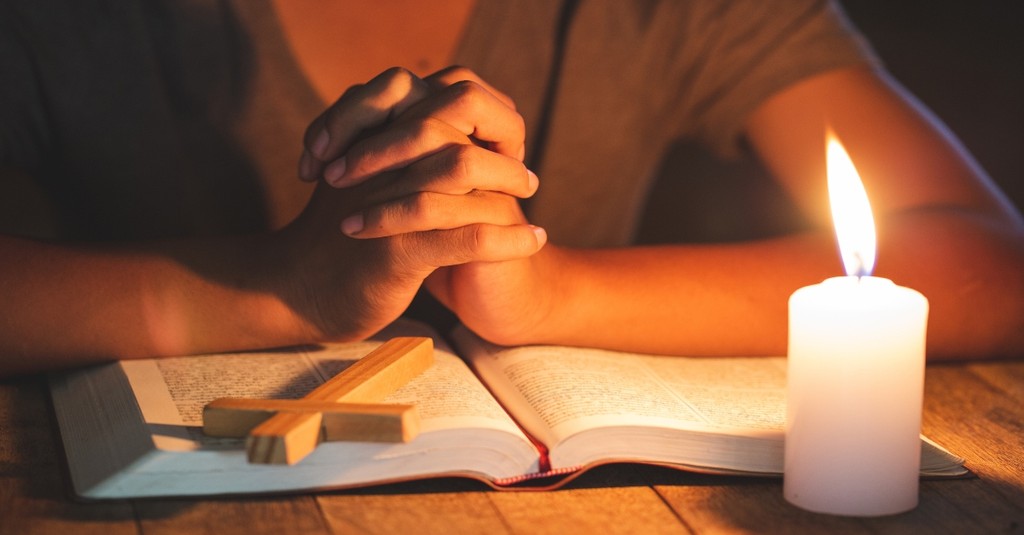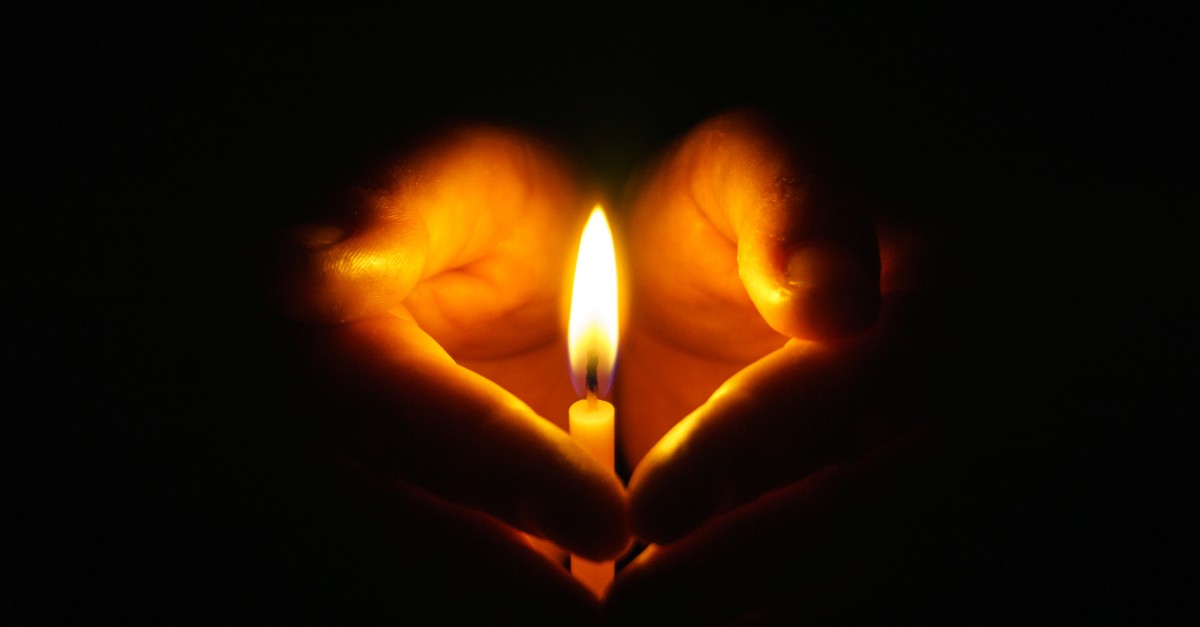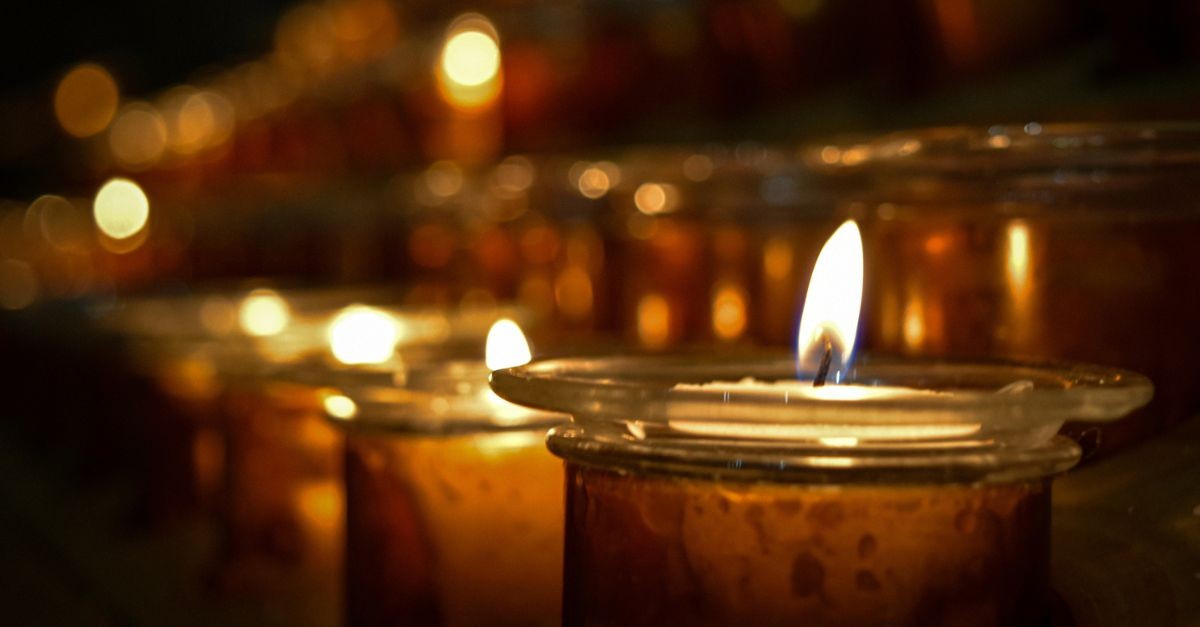
Whether you attend a church that promotes lighting candles during times of prayer, or if you have seen such a practice in a movie, you may have wondered if this is biblical, and if so, what is the proper way to use candles when you pray? Is there a history or tradition of such practice that Christians should be aware of, or even steer clear of?
This question matters because prayer is central to the Christian life. The Bible reminds us to “pray without ceasing” (1 Thessalonians 5:17), and yet Christians have often used tangible, physical tools—whether physical postures like folded hands, raised arms or kneeling, or prayer books, and songs—to guide their devotion. Candles, with a light that evokes “the light of Christ,” are one such tool. But should we use them? And if we do, we need to be certain our focus remains on Christ and not on any ritual or object.
Photo credit: ©Getty Images

Why Do Some Christians Use Candles for Prayer?
The answer begins with light, and light begins with God. In the beginning of creation, it pleased God to create light– illumination that would make the rest of His creation visible to the humans who would enjoy His handiwork (Genesis 1:3). He made light to govern the sky during the day and smaller lights for night. Later, humans would need more light to be able to see at night and began using fires, torches, and subsequently oil lamps to find their way.
Because light is so closely tied to God’s nature and His Word, Christians throughout history have often used candles as symbols in worship and prayer. A simple flame can remind believers that Christ is the Light of the world (John 8:12), or that God’s Word illuminates the path of those who follow Him (Psalm 119:105). In times of prayer, the glow of a candle may serve as a visual reminder of God’s presence, a focus for reflection, or a symbol of ongoing petitions lifted before Him. While the candle itself has no spiritual power, its light can become a meaningful aid that points the heart back to the Creator of Heaven and Earth, who is the source of all true light.
According to Britannica.com, the history of candles stretches back more than 5,000 years, with evidence of candle-like devices in both ancient Egypt and Crete. One of the earliest forms, called “rushlights,” was made by soaking the pithy stems of reeds in melted animal fat. These produced light but had no wick and burned quickly. Later, the Romans are credited with developing the first true wicked candles, which were made by dipping rolled papyrus repeatedly in melted tallow or beeswax. As Britannica notes, these innovations provided a steadier, longer-lasting flame, laying the groundwork for how candles would eventually be used not only for practical lighting but also in symbolic and religious settings.
Photo credit: ©GettyImages/ossyugioh

Are Prayer Candles Mentioned in the Bible/Are They Biblical?
The Bible doesn’t directly mention the use of candles in prayer. But what about lighting a candle specifically because you want it to enhance your prayer experience? The Bible does give some principles that help us as we consider this practice:
1. God looks at the heart, not the objects
Jesus warned against thinking external rituals make prayer more powerful (Matthew 6:7).
What matters is sincerity and faith: “The prayer of a righteous person is powerful and effective” (James 5:16).
Lighting a candle does not make prayer reach God faster; He hears you because of His covenant with you through Jesus Christ.
2. Light as a biblical symbol
Light often represents God’s presence and truth: “Your word is a lamp to my feet and a light to my path” (Psalm 119:105).
Jesus said, “I am the light of the world” (John 8:12).
So, if someone lights a candle as a reminder of Christ being the Light, it can be a meaningful symbol, but it has no spiritual power in itself.
3. Warnings against superstition
Scripture cautions against using physical items as if they had magical or spiritual force (Deuteronomy 18:10–12; Isaiah 42:8).
A candle should never replace faith in Christ or be seen as a charm that ensures answered prayer.
4. Christian freedom
Romans 14 teaches that some practices are a matter of personal conviction. If lighting a candle helps you focus on God, you may do so, but always remembering it’s optional and symbolic.
Paul reminds us: “Whatever you do, do all to the glory of God” (1 Corinthians 10:31).
In Catholic tradition, lighting candles during prayer is both a symbolic and devotional act with a long history. The Catechism of the Catholic Church, 1667-1671 identifies candles as one of many “sacramentals”—physical signs that do not convey grace the way sacraments like baptism do, but that help prepare believers to receive and cooperate with God’s grace. When someone lights a candle in front of a statue of Jesus, Mary, or a saint, the act is not about the candle's power but about representing a prayer lifted to God.
The United States Conference of Catholic Bishops explains it this way: “We light candles before the images of our Lord or the saints. The light signifies our prayer, which we offer in faith. The burning candle shows our desire to remain in prayer even as we continue on our day” (USCCB.org, “Votive Candles”). Britannica also notes that votive candles, whose name comes from the Latin votum meaning “vow,” are lit in Catholic practice as offerings accompanying prayers of petition or thanksgiving, often before shrines or images. Together, these sources show that, for Catholics (and members of some other denominations), a candle serves as a visible sign of prayer, faith, and remembrance, reflecting Christ’s own words: “I am the light of the world” (John 8:12).
Photo credit: ©GettyImages/BulentBARIS

How Do You Use Candles for Prayer?
Using candles in prayer can be as simple or as formal as you choose, but the key is to allow them to serve as a visual aid that turns your heart toward God. Here are several ways in which you can incorporate candles into your prayer life:
- Some believers use candles to help create a quiet space, setting aside the noise and distractions of the day.
- To some, the soft glow can help establish a discipline of spending time alone with God, much like shutting the door of your room before praying (Matthew 6:6). In this way, the act of lighting a candle becomes less about the candle itself and more about intentionally carving out a time and place to meet with God.
- Candles can also be used in prayer as a way to guide your focus. For instance, you might light one candle as you begin with thanksgiving, another as you intercede for others, and a final one as you pray for your own needs.
- Some families use a single candle at mealtimes to remind everyone that Christ is present with them, both in daily life and in times of worship.
- In group settings, inviting each person to light a candle while praying aloud can create a powerful picture of shared faith and unity.
However you incorporate them, the goal is not to make the candle the center, but to let its light remind you of Christ, who is always with His people.
Photo credit: ©Getty Images/Rena Lolivier

Which Color Prayer Candles Should You Use?
Color is of no consequence when it comes to use in prayer, though many churches use white candles in their services that indicate the holiness of Christ. When it comes to other prayer candle colors, one of the best-known uses of color in Christian practice is the Advent wreath. Traditionally, three purple candles and one pink candle are lit on the four Sundays leading up to Christmas, representing hope, peace, joy, and love. On Christmas Eve or Christmas Day, a white candle—the “Christ candle”—is placed at the center and lit to declare that the Light of the World has come.
Another example of light and remembrance comes from Judaism. Hanukkah, or the Feast of Dedication, celebrates the rededication of the temple after the Maccabean revolt in the second century B.C. When the temple was cleansed, only one day’s worth of consecrated oil was found for the lampstand, but it miraculously lasted eight days. In Jesus’ time, Hanukkah would have been marked with oil lamps, and John 10:22 records that when Jesus was in Jerusalem, He joined in the celebration of this holiday. Today, Jewish families use a special nine-branched menorah (hanukkiah), lighting an additional candle each night until all eight are burning, using the center “helper candle” (shamash). Traditionally, the candles are all the same color, though many modern menorahs use multicolored sets.
Both Advent and Hanukkah highlight how God’s people have used light to symbolize His presence and faithfulness. For Christians, there is freedom in whether to use candles at all, and no biblical command about their color. But if a particular candle or color helps remind you of Christ, it can serve as a meaningful tool to point your heart toward Him.
Photo credit: ©iStock/Getty Images Plus/RomoloTavani

Can Candles Enhance Your Prayer Life?
At their best, candles remind us that God often uses simple, ordinary things to point us to eternal truths. Just as bread and wine in communion remind us of Christ’s sacrifice, or water in baptism symbolizes new life, a candle can quietly remind us of Jesus’ light shining in the darkness. The object itself is not the source of power; instead, it serves as a signpost directing our attention to the One who truly hears and answers prayer. When used with the right perspective, candles can help us develop a posture of humility, stillness, and thanksgiving before the Lord.
Yet Christians should remember that prayer does not depend on atmosphere. Some of the most powerful prayers in Scripture were offered in prisons, deserts, and stormy seas—with no candles at all. What gives prayer its strength is not the presence of a flame but the presence of God Himself. If a candle helps you enter into that awareness, then use it with gratitude. If not, rest in knowing your prayers are just as precious to God. Either way, the true light that sustains your prayer life is Christ, and His presence never flickers or burns out. And we are to carry that light into the world to bring glory to God.
Photo credit: ©GettyImages/Javier_Art_Photography
Mary Oelerich-Meyer is a Chicago-area freelance writer and copy editor who prayed for years for a way to write about and for the Lord. She spent 20 years writing for area healthcare organizations, interviewing doctors and clinical professionals and writing more than 1,500 articles in addition to marketing collateral materials. Important work, but not what she felt called to do. She is grateful for any opportunity to share the Lord in her writing and editing, believing that life is too short to write about anything else. Previously she served as Marketing Communications Director for a large healthcare system. She holds a B.A. in International Business and Marketing from Cornell College (the original Cornell!) When not researching or writing, she loves to spend time with her writer daughter, granddaughter, rescue doggie and husband (not always in that order).
Originally published Thursday, 25 September 2025.
